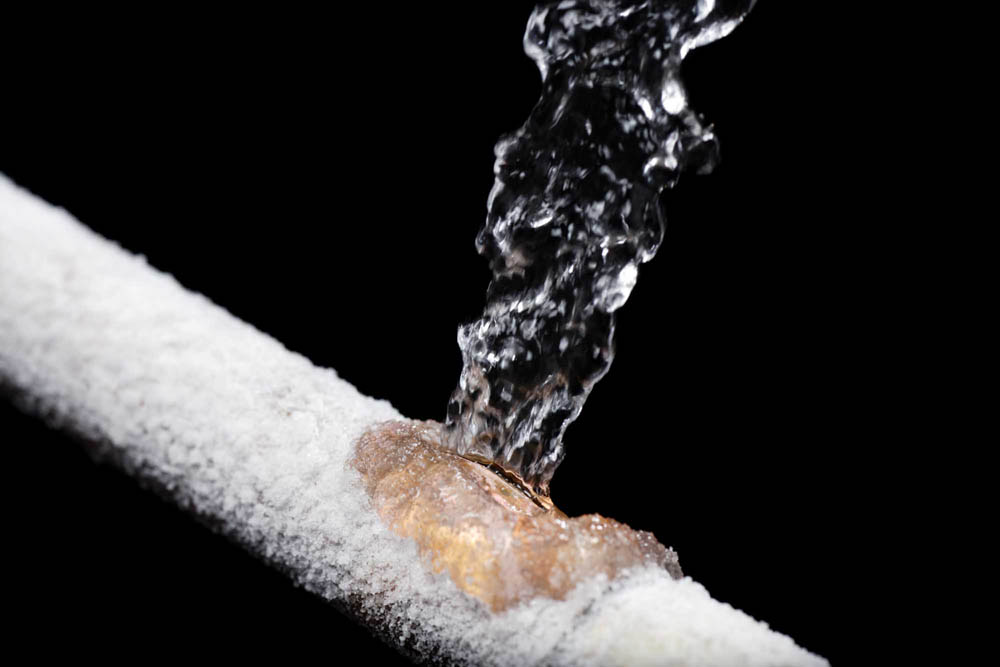The best tips to prevent frozen pipes
[vc_row][vc_column][vc_single_image image=”2334″ img_size=”large” alignment=”center”][vc_column_text]
Overview
If you’ve ever lived in colder regions, you must have faced the problem of frozen pipes. When the temperature goes down, the freezing and bursting of pipes become a common problem. If you’re not careful, the resulting water damage can cost you thousands of pounds.
Want to inspect the house pipes? Start with the ones present in unheated interiors – say the ones in the basement, garage, or the attic. These areas are much colder in comparison and can freeze or burst easily.
Not to say that the pipes in the exterior walls do not freeze – all you need is plummeting temperature and you’ll have this problem on your hands. In this article, we will list down some tips to prevent frozen pipes and if you live in the colder regions – we’ll recommend you bookmark this for future reference.
Beat the Cold
Like we say, precaution is better than cure. So some of our solutions here might cost you a little more than your average energy bill, but believe us when we say – it’s still quite less than the price of getting your piping systems repaired. The best way to ensure that your pipes remain unfrozen and healthy is by keeping them warm and keep the water running.
Here are some tips to prevent frozen pipes –
- If you have water supply pipes in the basement or garage, it’s time to keep the doors closed.
- Worried about the long-term danger of frozen pipes? Getting your basement and attic insulated would be a good idea. This will keep the area warmer and prevent seal cracks, drafts, and openings.
- Are you out often? This could be one of the reasons for you not using your home-heaters. So no matter where you go, leave the heat on the frost protection setting.
- Wind chill plays a major role in freezing pipes, especially during the winters. If uninsulated and unheated regions in the house have holes or cracks that can let in the outside air, chances are – the damage already done. So be on the lookout for any such undesirable openings and get them sealed as soon as possible.
- If you think you’re immune to this problem because you’re down in the south, that’s not the case. Houses made for warm climates are often not ready to handle cold snaps and this leads to flooding, bursting, and freezing of your piping systems. It’ll be good if you’re prepared with all the necessary winterizing techniques beforehand.
Plan B – How to Thaw Frozen Pipes
It’s a good day. You can feel the slight chill in the air and you’re about to wash your face for the day ahead – the faucet doesn’t do much though. There’s only a trickle of water that comes hopping. It’s done, your pipes are frozen. The second part of this article will help you with that.
Remember to be careful when you thaw it out – in case the pipes have already burst, the water might come flowing at you and effectively flooding your house. Let us list down a few steps & tips to prevent frozen pipes.
Step one – Turn your faucet on. The obvious first step to thaw frozen pipes is to heat them. Once the ice begins to melt, the water needs to flow through easily. Like we’ve already discussed before, running water would help melt the ice in the pipe.
Step Two – Heat the pipe. The best thing to use for this purpose could be everyday appliances like a hairdryer, hot water towels or even a heating pad. Try not to let your impulses get in the way and avoid using a blowtorch, a charcoal stove, or any other appliance with an open flame.
Step Three – Don’t stop. While the title of this step might be vague, it is exactly what you should do. Don’t stop heating the pipes until the full water pressure returns. Also, check other pipes to see if they’re working correctly – chances are, they’re frozen too.
Step Four – Do nothing. In case you’re not a fan of fixing things or can’t locate the frozen area, or you were unsuccessful in thawing it – do nothing. The task might require a professional – call your nearest licensed plumber.
Step Five – Once you’re out of the problem, you might consider installing a supplemental heat device. This can help you avoid any such undesirable events in the future.
It’s a wrap
We hope we could educate you on the subject, even if it’s just a little help. For one, we understand how difficult it is to thaw and repair a frozen pipe and we hope you wouldn’t have to go through it. But in case you do, refer to these tips to prevent frozen pipes.
Are the instructions unclear? Get more than just tips to prevent frozen pipes, let the experts handle the job – write to us at info@plumbisimo.co.uk
or give us a ring at 07 444 640 63, we promise to solve all your piping problems!
In case you’d like to have a look at our work – do so by visiting our social media pages on Facebook, Instagram, Twitter![/vc_column_text][/vc_column][/vc_row]


